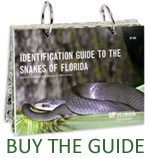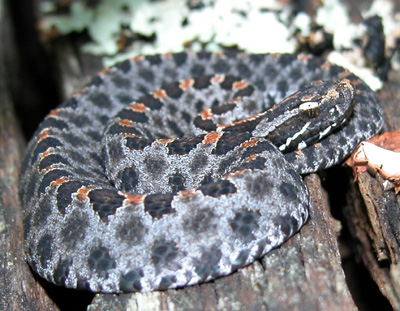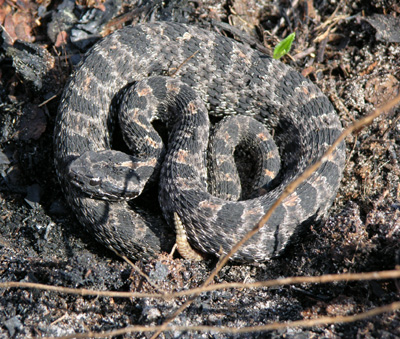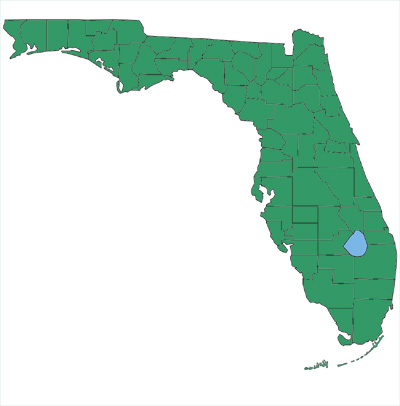Florida's Snakes

Pygmy Rattlesnake
(Sistrurus miliarius)VENOMOUS
Venomous snakebites are rare and can usually be avoided; however, knowing how to respond correctly to venomous snakebites is also important. Learn more...

Blotched
Pygmy Rattlesnake (showing common color variation)


Photos by Dr. Steve A. Johnson (UF). These photos may not be used without the express written permission of the photographer.
Size:
Usually 1–1.5 ft. (max. ~2.5 ft.)
Identification:
Relatively thick body is grayish; back and sides are marked with rows of dark gray-black, irregularly shaped blotches. Blotches on the back are especially dark and are often separated by a reddish-brown stripe down the spine. Obvious dark bands run from each eye to the corners of the jaw. Tail is tipped with a tiny rattle that is prone to breaking off. Scales have obvious lengthwise ridges (keels). This snake gives birth to live young (does not lay eggs).
Habitats:
Found throughout Florida in a wide variety of habitats from dry upland forests and sandhills to seasonally flooded flatwoods and marshes. It is the most commonly encountered venomous snake in urbanized areas, often in gardens or brush piles.
Diet:
Insects, frogs, lizards, small snakes, nestling birds, mice
Map by Monica E. McGarrity - may be used freely for education.
